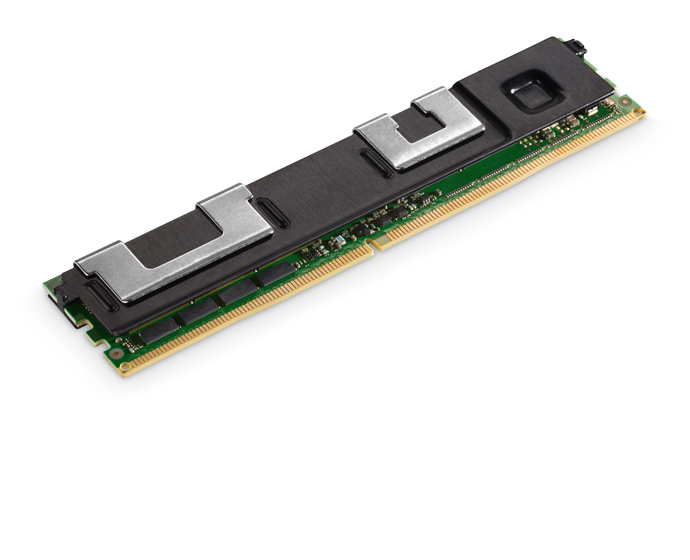Driving the New Memory and Storage Frontier in 2019
The Future — a Smart, Connected Data-Centric World — is Now.

Intel is not a company that simply dabbles in memory and storage; it’s a company focused on data-centric transformation, of disrupting the memory and storage market with key technologies that bridge cost and performance gaps in the memory and storage hierarchy. We’re building the future for a smart, connected, data-centric world — and the future is now.
Consider this: Memory and storage is vital to the computing experience. Computing advances would not be possible without the evolution of memory and storage. And in today’s data-driven world, the need for moving, storing and processing data requires forward-thinking storage capabilities and cutting-edge innovation in the memory and storage space.
Data is being created everywhere at a frantic pace, pushing new frontiers in industries from healthcare and manufacturing to transportation and finance. This data deluge is also creating new challenges in memory and storage across platform architectures, underscoring the need for real-time or near-real-time data analysis and faster access to ever-growing amounts of data — some of which is stored offline.
DRAM is not big enough to solve today’s problem of real-time data analysis — and traditional storage isn’t fast enough. In addition, we need a high-capacity storage solution that is connected and online to access offline data. This is where Intel’s memory and storage technology leadership comes into play. Intel® Optane™ technology drives improvements in real-time data analysis, while Intel® 3D NAND delivers faster access to large amounts of data.
These two technologies are the dynamic duo of memory and storage, fighting through bottlenecks with an industry-leading combination of factors, including responsiveness and large-capacity storage.
Intel’s memory and storage technologies are changing the game for our customers and helping them address the massive increase in data they face on a daily basis. Our business strategy is driven by being technology-driven, customer-inspired and platform-connected.
Technology-Driven
We’ve come a long way in a short time. In 2015, we touted the invention of a new memory technology — Intel Optane memory — the first in 25 years. Since then, we’ve delivered our growing Intel Optane technology line of products. Last year, we introduced the industry’s first PCIe-based QLC solid state drive. We grew our Intel Optane technology and NAND product lines with a focus on new densities and innovative form factors in 2018. As a result, more than half of our 2018 memory and storage sales volume is based on 64L products.
We’re also excited about soon-to-be released Intel Optane DC Persistent Memory that will be available on next-generation Intel® Xeon® processors for data centers. This is redefining the memory and storage hierarchy and bringing persistent, large-scale memory closer to the processor.
We’re not just creating new memory and storage technologies, we’re disrupting the market.
Customer-Inspired
Being customer-inspired means helping them solve their challenges with our latest technologies. Let me share a few stories and examples.
- When SAP leaders were looking at ways to improve their reboot times for system reloads, they considered persistent memory as one way they could improve. Reboot and recovery times are important for SAP customers. When we approached SAP about our new Intel Optane DC Persistent Memory technology, SAP leaders were interested in understanding how this might help their business challenge of reducing overall total cost of ownership and improving downtime for maintenance updates. After spending time with this new product, SAP called it a revolutionary change for SAP HANA. SAP HANA 2.0 SPS03 and Intel Optane DC Persistent Memory will help deliver lower TCO through larger in-memory capacity, faster start times and simplified data-tiering while moving more data closer to the processor for faster time to insights.
- VMware’s leaders engaged with their customers and had clear marching orders — to improve VMware’s hybrid cloud solution to be more responsive and agile from the cloud to the edge. In their pursuit to improve responsiveness, VMware leaders evaluated Intel Optane SSDs and realized that by modifying their VMware vSAN offering or rewriting their code, they could benefit from the attributes of Intel Optane SSDs and deliver on that customer expectation of improved responsiveness. This became available last year, and we now have many OEM vSAN-ready node product offerings that provide increased performance and support for more virtual machines per server.
- Cisco has transformed its product offerings along the lines of the latest architectural change for “hyper converged infrastructure.” Working with Cisco, we put together a combined caching and storage option tuned for its environment. As a result, Cisco recently announced its Hyperflex* 4.0 all-NVMe solution with Intel Optane SSDs. What’s also interesting is that Cisco showcased its Hyperflex Edge solutions, again using Intel Optane SSDs as part of the Intel® Distribution of OpenVino™ toolkit for the internet of things. (More: Hyperflex 4.0 | Hyperflex Edge solution )
Data-Centric
Intel’s data-centric approach improves not only our memory and storage products, but our overall platform to unleash the full power of our CPUs. In the PC client space, we address responsiveness and space constraints by combining Intel Optane memory media and Intel® QLC 3D NAND on a single M.2 device. Our data center CPUs have new features like VROC/VMD for raid solutions and memory controller supporting our latest Intel Optane DC Persistent Memory.
A New Frontier
Our new innovative solutions are continuing to disrupt the memory and storage tier. Our ecosystem partners see that and realize that they too will benefit from this new approach. As such, they are actively engaged in rewriting their applications, redesigning their storage and memory solutions, and qualifying platforms for delivery to their customers.
Indeed, it is a new frontier on the memory and storage front in 2019, and we at Intel believe we have the right set of technologies and solutions to help our customers win in the data-centric transition.
Rob Crooke is senior vice president and general manager of the Non-Volatile Memory Solutions Group at Intel Corporation.

